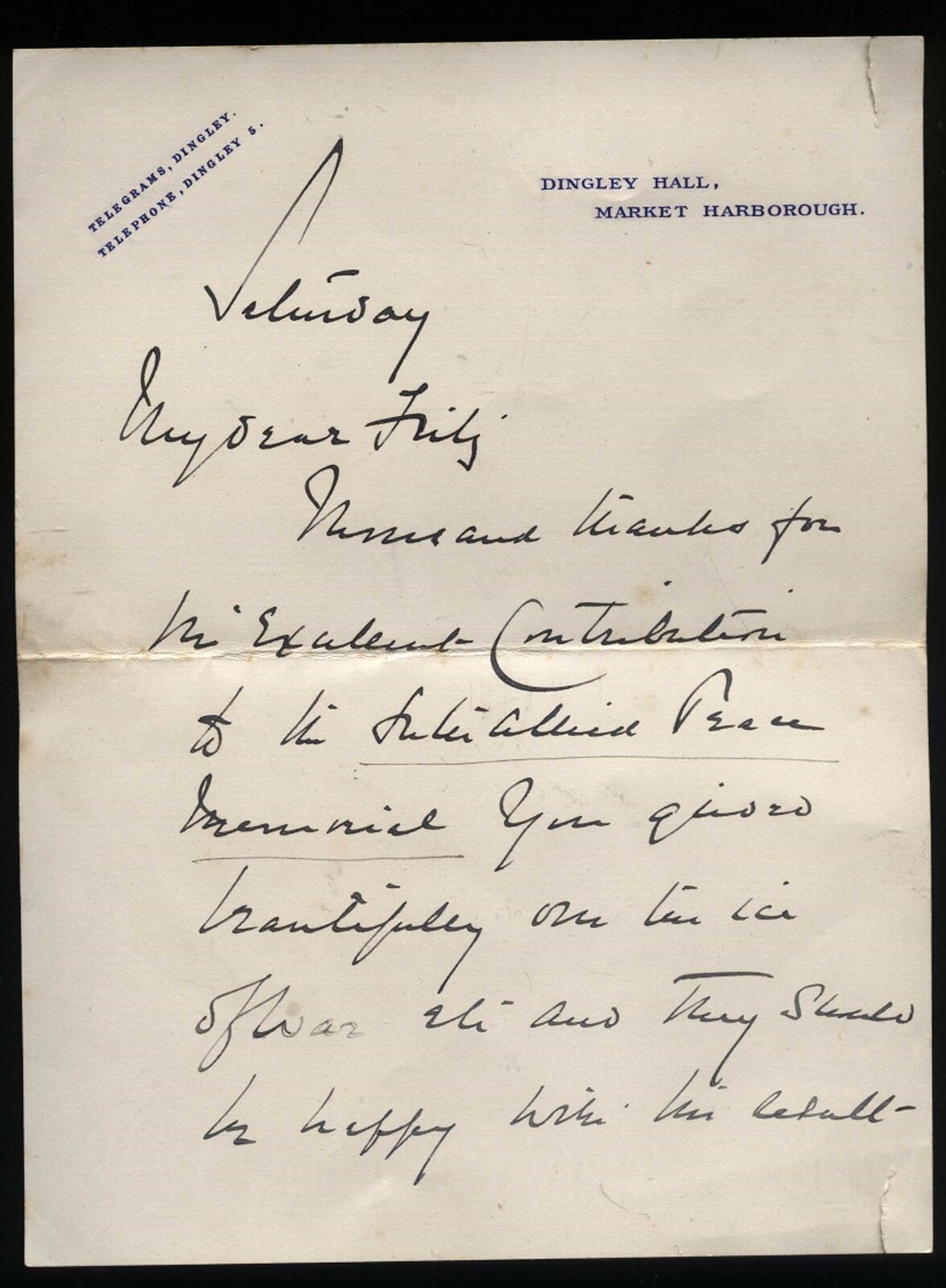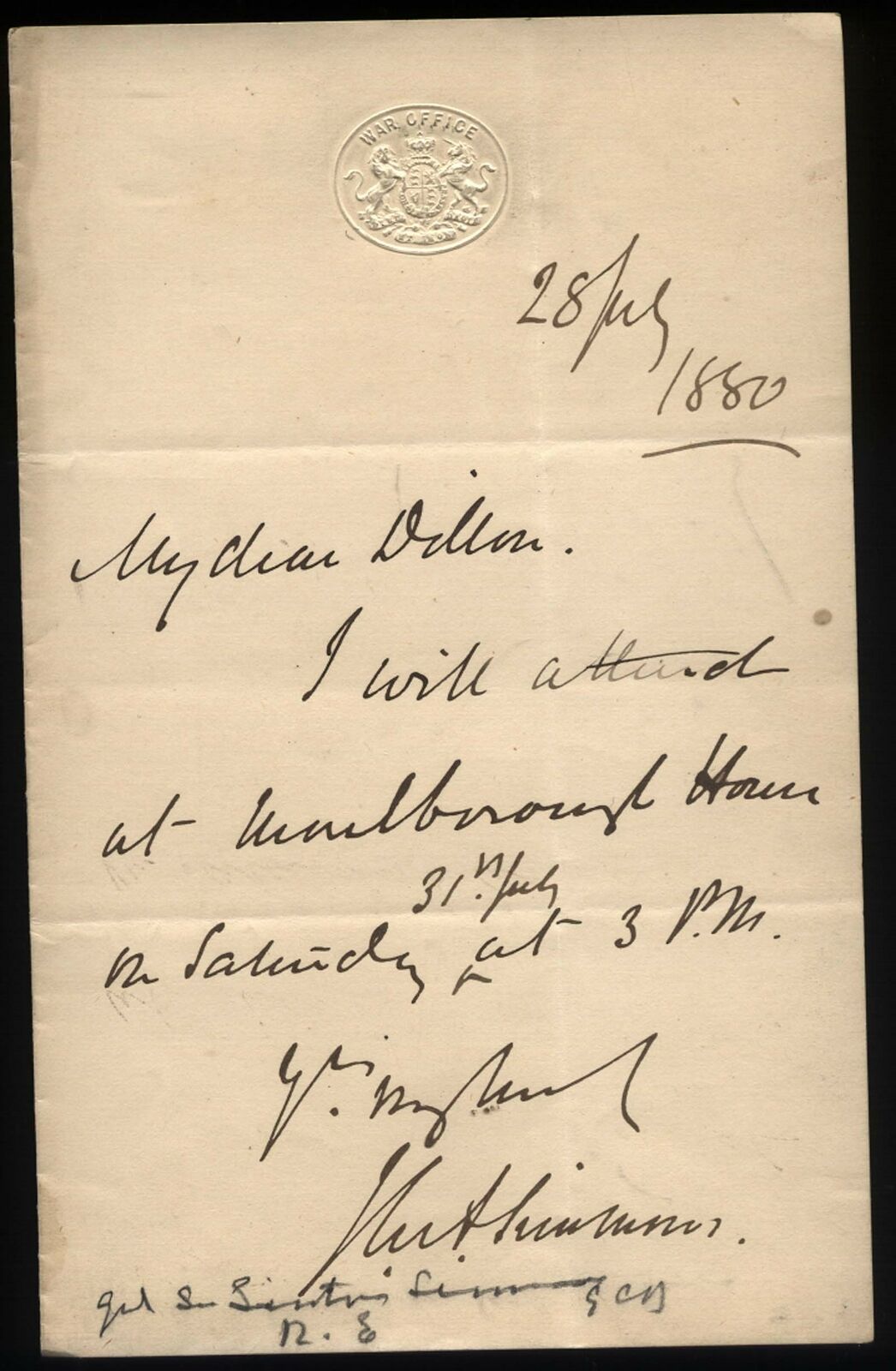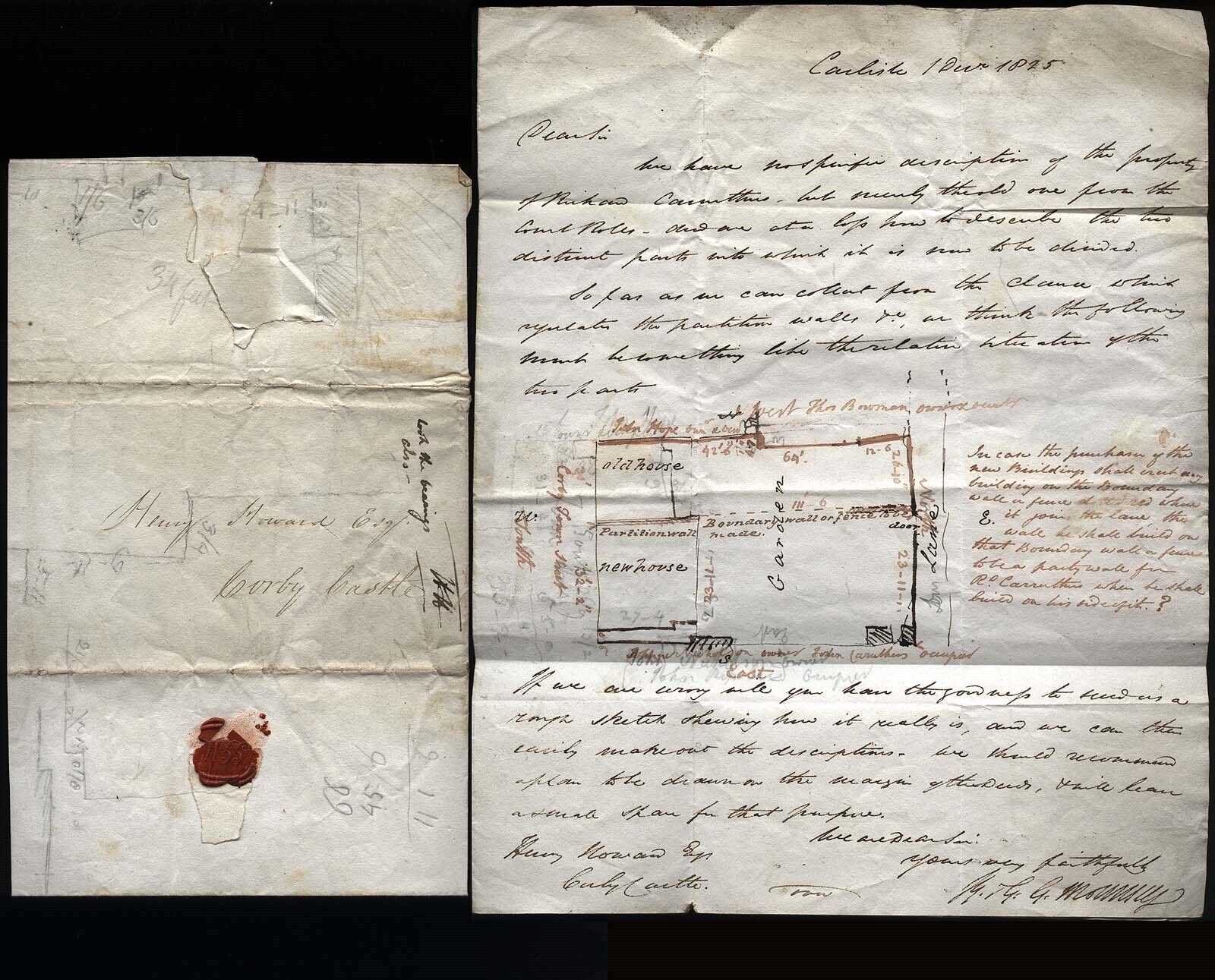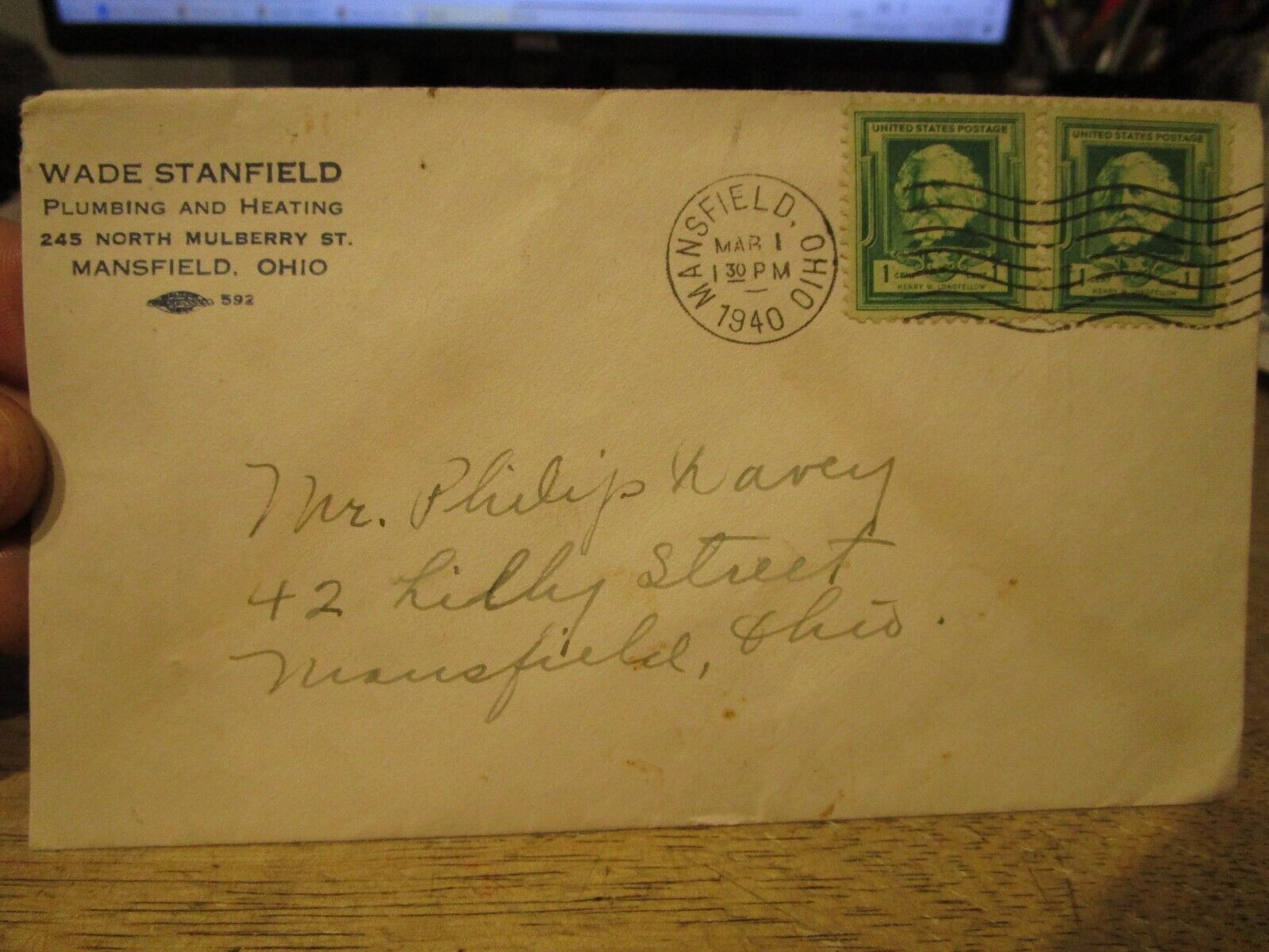-40%
Circa 1920-30 DINGLEY HALL Market Harborough, 1st Earl, Admiral David Beatty
$ 111.96
- Description
- Size Guide
Description
Circa 1920-30 DINGLEY HALL Market Harborough, 1st Earl, Admiral David BeattyThis product data sheet is originally written in English.
Circa 1926-30 Undated letter from Admiral, 1st Earl David Beatty at Dingley Hall, Market Harborough, Leicestershire to Fritz (Sir Frederick Ponsonby)
" Saturday,
My Dear Fritz,
......and thanks for this excellent contribution to the future allied peace memorial you glided beautifully over the ice of War etc and they should be happy with this result, very cold & snowing here, Hunting is seemingly at a standstill but it changes Very quickly & I do not despair, Yours ......David".
Frederick Edward Grey Ponsonby, 1st Baron Sysonby, GCB, GCVO, PC (16 September 1867 – 20 October 1935) was a British soldier and courtier
.
Known as Fritz, Ponsonby was the second son of General Sir Henry Ponsonby and his wife the Hon. Mary Elizabeth (née Bulteel). A member of a junior branch of the Ponsonby family, he was the grandson of General Sir Frederick Cavendish Ponsonby and the great-grandson of Frederick Ponsonby, 3rd Earl of Bessborough. Arthur Ponsonby, 1st Baron Ponsonby of Shulbrede, was his younger brother.
His godparents were German Emperor Frederick III and Empress Victoria.
He also held several court positions, notably as Equerry-in-Ordinary to Queen Victoria from 1894[2][3] to 1901, as Assistant Keeper of the Privy Purse and Assistant Private Secretary to Queen Victoria from 1897[4][5] to 1901, to King Edward VII from 1901 to 1910 and to King George V from 1910[6][7] to 1914; as Keeper of the Privy Purse from 1914[8][9] to 1935, and as Lieutenant Governor of Windsor Castle from 1928 to 1935.
In 1906, Ponsonby was appointed to the Order of the Bath as a Companion (CB).[11][12] In 1910, he was promoted to be a Knight Commander (KCVO)[13] and was promoted to Knight Grand Cross (GCVO) in the 1921 New Year Honours.[14] In 1914, he was sworn of the Privy Council.[15] In the 1935 Birthday Honours, he was raised to the peerage as Baron Sysonby, of Wonersh in the County of Surrey.
David Richard Beatty, 1st Earl Beatty, GCB, OM, GCVO, DSO, PC (17 January 1871 – 11 March 1936) was a Royal Navy officer
. After serving in the Mahdist War and then the response to the Boxer Rebellion, he commanded the 1st Battlecruiser Squadron at the Battle of Jutland in 1916, a tactically indecisive engagement after which his aggressive approach was contrasted with the caution of his commander Admiral Sir John Jellicoe. He is remembered for his comment at Jutland that "There seems to be something wrong with our bloody ships today", after two of his ships exploded. Later in the war he succeeded Jellicoe as Commander in Chief of the Grand Fleet, in which capacity he received the surrender of the German High Seas Fleet at the end of the war. He then followed Jellicoe's path a second time, serving as First Sea Lord—a position that Beatty held longer (7 years 9 months) than any other First Sea Lord. While First Sea Lord, he was involved in negotiating the Washington Naval Treaty of 1922 in which it was agreed that the United States, Britain and Japan should set their navies in a ratio of 5:5:3, with France and Italy maintaining smaller ratio fleets of 1.75 each.
Beatty was born into an Anglo-Irish family at Howbeck Lodge in the parish of Stapeley, near Nantwich, Cheshire, on 17 January 1871.[1] He was the second son of five children born to Captain David Longfield Beatty and Katherine (or Katrine) Edith Beatty (née Sadleir), both from Ireland: David Longfield had been an officer in the Fourth Hussars where he formed a relationship with Katrine, the wife of another officer.
Katrine had fair hair and blue eyes, soft wide lips, and overall an air of command. Beatty's father was 6 ft 4 in (1.93 m) tall, dark haired with big hands and feet. Both David and his elder brother Charles were short, about 5 ft 5 in (1.65 m) with small hands and feet. Charles was fair haired taking after his mother's features, whereas David had more the look of his father. After the affair between David Longfield and Katrine became known, David Longfield's father (Beatty's grandfather), David Vandeleur Beatty (1815–1881), arranged for his son to be posted to India in the hope that the scandalous relationship might end. David Longfield resigned from the regiment on 21 November 1865, with the honorary rank of Captain. He took up residence with Katrine in Cheshire and in 1869 sold his commission.[3] David Longfield was unable to marry Katrine until Katrine had obtained a divorce on 21 February 1871, after the birth of their first two sons. Beatty's birth certificate recorded his mother's surname as Beatty, and his parents' eventual marriage at St Michael's Church in Liverpool was kept secret.
Beatty's early education concentrated on horsemanship, hunting and learning to be a gentleman. Beatty had a close relationship with his elder brother Charles, who became his ally against their oppressive and overbearing father. They remained close throughout life, so much so that the only time Beatty felt despair was at his brother's death. Beatty later wrote to his wife about Charles, we lived together, played together, rode together, fought together.[5] His brothers would later join the British Army, but early on young David developed an interest in ships and the sea and expressed a desire to join the Royal Navy. In 1881 Beatty's grandfather died and David Longfield succeeded to the 18th century mansion, 'Borodale', outside Enniscorthy, in County Wexford. After retiring from the army David Longfield established a business training horses first in Cheshire and then at 'The Mount', near Rugby, Warwickshire. On inheriting and following the death of his wife at 'The Mount', David Longfield returned to Ireland abandoning the training business.
Beatty was educated at Kilkenny College and in 1882 entered Burney's Naval Academy at Gosport, which was a 'crammer' for boys wishing to take the entrance examinations for the Royal Navy
Beatty joined the Royal Navy as a cadet passing into the training ship HMS Britannia tenth out of ninety-nine candidates in January 1884.[8] During his two years at Britannia, moored at Dartmouth, he was beaten three times for various infractions. He passed out of Britannia eighteenth out of the thirty-three remaining cadets at the end of 1885.[8] Beatty's letters home made no complaint about the poor living conditions in Britannia, and generally he was extrovert, even aggressive, and resented discipline. However, he understood how far he could transgress without serious consequences, and this approach continued throughout his career.
Beatty was given orders to join the China Station in January 1886, but the posting did not appeal to his mother, who wrote to Lord Charles Beresford, then a senior naval officer, member of parliament and personal friend, to use his influence to obtain something better.[10] Beatty was, in February 1886, instead appointed to HMS Alexandra, flagship of Admiral the Duke of Edinburgh, Queen Victoria's second son Alfred, who was Commander-in-Chief of the Mediterranean Squadron.[11] This proved an excellent social opening for Beatty, who established a longstanding relationship with the Duke's eldest daughter, Marie, and with other members of the court. Alexandra was a three-masted sailing ship with auxiliary steam power, nonetheless, remaining flagship in a navy which was steadily transitioning from sail to steam. Life in the Mediterranean fleet was considerably easier than cadet life, with visits to friendly ports all around the Mediterranean, but Beatty was concerned to work diligently towards naval examinations, which would determine seniority and future promotion prospects.[12] Beatty was promoted to midshipman on 15 May 1886[2] and assigned to assist Lieutenant STANLEY Colville on watchkeeping duties: Colville was to play an important part in Beatty's future career.
Beatty left HMS Alexandra in March 1889 and joined the cruiser HMS Warspite in July 1889 for manoeuvres before joining the sailing corvette HMS Ruby in September 1889, in which he was promoted to sub-lieutenant on 14 May 1890.[14] Next he attended courses at the Royal Naval College, Greenwich during which he was somewhat distracted from his naval career by the delights of London. Beatty scored a first-class examination pass in Torpedoes, but only seconds in Seamanship, Gunnery and Pilotage, and a third in Navigation. A biography states that "his cabin at Greenwich was full of photographs of actresses, some of which were signed in the most endearing terms".[15] After attending the gunnery school, HMS Excellent, he undertook a posting to a torpedo boat in July 1891 and then a tour in HMS Nile from 19 January 1892.
Beatty joined the Royal Yacht Victoria and Albert in July 1892 while Queen Victoria was holidaying in the Mediterranean: Victoria was in mourning for her grandson, Albert Duke of Clarence, who had died January 1892.[16] Promoted to lieutenant on 25 August 1892,[17] he rejoined HMS Ruby in August 1892 and then transferred to the battleship HMS Camperdown in September 1893 (which had only recently been involved in the fleet accident where she had rammed and sunk the battleship HMS Victoria).[2] He transferred to the battleship HMS Trafalgar in September 1895
On the eve of the First World War in 1914, Beatty was appointed a Knight Commander of the Order of the Bath[42] and promoted to acting vice-admiral in February 1915 and given command of the Battle Cruiser Fleet a month later. He was confirmed in the rank of vice-admiral on 9 August 1915.[43] He led the 1st Battlecruiser Squadron at the actions at Heligoland Bight (1914), Dogger Bank (1915) and Jutland (1916)
Jutland proved to be decisive in Beatty's career, despite the loss of two of his battlecruisers. Beatty is reported to have remarked (to his Flag Captain, Ernle Chatfield, later First Sea Lord in the early 1930s), "there seems to be something wrong with our bloody ships today", after two of them had exploded within half an hour during the battle.[44] In any case Beatty's actions succeeded in drawing the German High Seas Fleet into action against the British Grand Fleet.
Beatty succeeded Admiral John Jellicoe as commander-in-chief of the Grand Fleet and received promotion to the acting rank of admiral in December 1916.[44] With his dashing style, he was the antithesis of his predecessor.[44] Beatty's marriage was failing disastrously at the time, and the result was to be a decade-long love affair between Beatty and Eugénie Godfrey-Faussett, wife of Captain Bryan Godfrey-Faussett.[45] Under Beatty's command the Grand Fleet maintained its dominance of the North Sea until the end of the War
Beatty escorted the German High Seas Fleet to internment at Scapa Flow in November 1918 giving the order from his flagship HMS Queen Elizabeth that "the German Flag will be hauled down at sunset and will not be raised again without permission".[44] This was not a lawful order, as the fleet remained the property of the German Government having been interned rather than having surrendered, but nevertheless Beatty enforced it.
Beatty was promoted to substantive full admiral on 1 January 1919[47] and to Admiral of the Fleet on 1 May 1919.[48] He was created 1st Earl Beatty, Viscount Borodale and Baron Beatty of the North Sea and Brooksby on 18 October 1919.[49] He became First Sea Lord on 1 November 1919.[46] In this capacity he was involved in negotiating the Washington Naval Treaty of 1922 in which it was agreed that the United States, Britain and Japan should set their navies in a ratio of 5:5:3, with France and Italy maintaining smaller fleets.
During the First Labour Government of 1924, with Japan increasingly hostile to the UK, Beatty lobbied the Clynes Committee for construction of the Singapore Naval Base to continue. Beatty wrote out, but did not send, a threat of resignation. The government were trying to cut back on the numbers of cruisers constructed; the other Sea Lords attributed the building of the Kent class to Beatty's lobbying, but government desire to alleviate shipyard unemployment was probably a more important factor
Despite further rumours that he would resign, Beatty remained in office when the Conservatives took power in the autumn of 1924.[52] Supported by the First Lord of the Admiralty William Bridgeman, he clashed with the new Chancellor of the Exchequer, Winston Churchill, once again over the number of cruisers required by the Royal Navy. At this stage of his career Churchill was opposed to what he saw as excessive defence spending. This may seem odd in light of his previous and subsequent reputation, but in the 1920s no major war seemed to be on the horizon.[53][54] Beatty also at this time pressed hard for the return of responsibility for naval aviation from the newly formed Royal Air Force to the Royal Navy.
In 1926 Beatty was considered for the post of Governor General of Canada but was rejected by the Colonial Secretary Leo Amery as he had "no manners and an impossible American wife".
By the time of his retirement from the Royal Navy in July 1927[56] a great deal of time was being spent preparing for the Coolidge Conference in Geneva, although Beatty did not himself attend as he had to remain in London to supervise the deployment of naval and marine forces against nationalist unrest in China and Egypt. On his last day in office (30 July) he attended a Cabinet at which Bridgeman reported the breakdown of the Geneva Conference as the Americans refused to accept any gun smaller than 8-inch for their cruisers, and after leaving office he congratulated Bridgeman that the Americans had not been able to achieve "command of the sea at any cost".[57] Beatty was appointed a member of the Privy Council on 25 July 1927.[58] Stephen Roskill wrote that whilst Beatty and his disciple Chatfield deserve some praise for the Royal Navy's comparative readiness in 1939, his main achievement was to maintain the morale of the Navy at a time of serious defence cuts, and that without his strong leadership the Royal Navy might have suffered more events like the Invergordon Mutiny of 1931.
Beatty spent much of his life (when not at sea) in Leicestershire, and lived at Brooksby Hall and Dingley Hall. In July 1930 he denounced the London Naval Treaty in the House of Lords as "a great and deplorable blunder to which we are about to be committed by signing away the sea power by which the British Empire came into being".[60] Beatty also claimed: "If any sane man erects an edifice, or has great possessions, he protects them by insurance. The Navy is the insurance company of the economic unity of the Empire. Under the Naval Treaty of London the Navy will be totally and entirely inadequate to provide that insurance".
Beatty's old commander Admiral John Jellicoe died on 19 November 1935.[62] Already suffering from heart failure, and sick with influenza, Beatty defied doctors' orders and left his bed to act as a pallbearer, saying, "What will the Navy say if I fail to attend Jellicoe's funeral?" He was so obviously ill that, as the funeral procession passed up Fleet Street, a bystander sent a glass of brandy out to him. He also insisted on attending the funeral of King George V in January 1936. These acts hastened his own death.[63] Beatty died at around 1 am on 12 March 1936.
Bust of Beatty by William McMillan in Trafalgar Square, London. The two fountains were redesigned as memorials to Beatty and Jellicoe At Beatty's funeral his coffin was draped in the Union Flag flown by his flagship HMS Queen Elizabeth in 1919. The Archbishop of Canterbury, Cosmo Lang, said "In him something of the spirit of Nelson seemed to have come back". The Prime Minister, STANLEY Baldwin, called in the House of Commons for a public memorial to Beatty to be erected, but no action was taken until after the Second World War, when busts of Beatty and Jellicoe were unveiled in Trafalgar Square on 21 October (Trafalgar Day) 1948.
Beatty had requested in his will that he would like to be buried next to his wife Ethel at Dingley: however he was actually buried at St Paul's Cathedral and therefore the double grave at Dingley Church contains only his wife's body.[67]
:
Powered by SixBit's eCommerce Solution
Circa 1926-30 Undated letter from Admiral, 1st Earl David Beatty at Dingley Hall, Market Harborough, Leicestershire to Fritz (Sir Frederick Ponsonby) " Saturday, My Dear Fritz, ......and thanks for this excellent contribution to the future allied peace memorial you glided beautifully over the ice of War etc and they should be happy with this result, very cold & snowing here, Hunting is seemingly at a standstill but it changes Very quickly & I do not despair, Yours ......David". Frederick Edward Grey Ponsonby, 1st Baron Sysonby, GCB, GCVO, PC (16 September 1867 – 20 October 1935) was a British soldier and courtier.Known as Fritz, Ponsonby was the second son of General Sir Henry Ponsonby and his wife the Hon. Mary Elizabeth (née Bulteel). A member of a junior branch of the Ponsonby family,
Related Interests
Sir Frederick Ponsonby
EAN
Does Not apply
Country
England
Estate or House name
Dingley Hall
England County
Leicestershire
City/Town/Village/Place
Market Harborough
Era
1920-30
Famous Persons in history
Admiral David Beatty, 1st Earl Beatty
Document Type
Manuscript letter
Related Interests 2
War Peace Memorial










